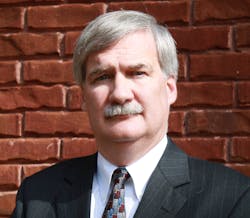The main purpose of automation is no longer to eliminate labor. That may have been the purpose some decades ago, but it is not the purpose of automation today. If some type of machine or automated equipment could be used to replace manual labor, it was probably already installed a long time ago.
So then, today, what is the purpose of automation if it’s not to eliminate jobs? Let’s see if we can answer that question with a simple analogy.
If your job were to move some cargo from one point to another and you had a standard pickup truck to do it with, you would probably do OK. If you had a lot of cargo to move, you would probably need to make lots of trips and it would take you a good bit of time to do it, but you would still get it done.
But immediately you would be looking for a bigger truck. And, if you really had a lot of cargo to move, you would be looking for a much bigger truck. If you had to move that cargo a long distance, you would be looking for the quickest routes. And if that truck weren’t as fast as you thought it should be, you would be looking to get it a tune-up or perhaps even a new engine.
Well, you see where I’m going with this analogy. Manufacturing just about anything is pretty analogous to moving cargo with a truck. You want to move as much as you can as fast as you can, so you want the biggest and fastest truck you can get. (And you’re not trying to lay off the truck driver; that would just be stupid.)
Automation today is about finding ways to increase productivity, move things through the plant faster, move higher volumes through the plant, get more product out the door, get the equipment to do more, reduce downtime, reduce waste, increase first-pass quality, and increase first-pass yield.
It’s about giving the people on the shop floor—the people actually driving the productivity truck—the biggest and fastest truck we can possibly give them. It’s about making them the driver of the biggest and fastest truck that ever hit the highway.
And, just like with the bigger and faster truck, getting the biggest and fastest manufacturing plant you can sure makes a lot of economic sense. Getting the plant to do more by being more productive is nothing but great economics. That’s what we try to achieve when we look at opportunities to put new automation in plants. It’s simply about getting more productivity out of the plant.
And, as a byproduct of the improvements in productivity, in many cases wages for the shop floor worker go up and more shop floor workers are hired. Think about this: You definitely can, need to and want to pay the person driving the big, fast truck a lot more than the person driving the small, slow truck. After all, they’re getting so much more done. Their worth or value is so much higher because they’re able to do so much more.
Most people don’t get that the first time I tell them, or even the first 10 times I tell them. But, ultimately, my job is to raise the wages of the people on the shop floor as much as I possibly can by giving them the tools they need to get so much more done. The better tools they have, the more they can get done. The more they can get done, the more valuable they are to the company and the more they’ll get paid. That’s just simple economics.
>>John Clemons is director of manufacturing IT for Maverick Technologies. He is on the MESA Americas Board of Directors and is chair of the MESA Marketing Committee.
About the Author
John Clemons
Director of Manufacturing IT for Maverick Technologies

Leaders relevant to this article:
